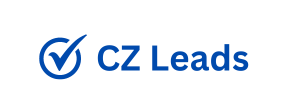It continues to play a major role in marketing, capturing consumers’ attention and strengthening brand image. But why does this traditional tool remain so powerful? Here are some answers.
A strong and lasting visual impact
Basically, the product catalog provides a unique visual experience. Far from the register of digital interfaces, often overloaded and ephemeral, a catalog guarantees calm and pleasant navigation.
Visitors can take the time to browse the pages, contemplate the products and immerse themselves in the brand’s universe. 93% of consumers believe that a printed catalog captures their attention more easily than an online advertisement. Moreover, Easycom supports you in all your projects in this regard.
But in addition, the physical catalog is generally afghanistan bulk sms service kept longer than newsletters and digital advertisements, which are quickly deleted or forgotten. This tangible medium allows the company to remain present in the minds of customers for an extended period. On average, a catalog is kept in a household for about 20 days.
A complementary tool to digital
The product catalog is not the 17 best emailing software tested and compared opposed to digital, it complements online tools. Rightly so, it fits perfectly into an omnichannel strategy, directing customers to an e-commerce site, a physical point of sale using QR codes or calls to action. It is therefore a real conversion lever, particularly for sectors in which touch plays a key role, such as fashion or furniture. It is therefore in your best interest to create a product catalog now.
In addition, brands have the opportunity to enrich their catalogs with interactive content thanks to technologies such as augmented reality. The fusion between the physical and the digital strengthens the user experience. It actually meets the expectations of modern consumers, always looking for more immersive and personalized interactions.
A vector of emotion and loyalty
The product catalog establishes a strong bhb directory emotional connection between the company and its customers. Here, it is not just about presenting products, but about telling a story, transmitting values. In this respect, customers feel valued when they receive a personalized catalog, designed especially for them. Feedback indicates that a quality catalog strengthens customer loyalty to a brand.
Through the tactile experience, the catalog allows in other words to associate positive emotions with the brand. For example, quality papers, careful finishes, elegant visuals induce a feeling of consideration. Thanks to this sensory dimension, often absent in digital marketing, your company has what it takes to differentiate itself from the competition.
Effective support for varied audiences
The catalog remains a tool accessible to all generations, unlike some digital channels that tend to exclude those less familiar with technology. As proof, most seniors prefer to consult a paper catalog rather than an online store, hence the importance of this medium to reach a wide audience. Better still, catalogs are used as reference tools in professional environments, in this case, for wholesalers, as well as distributors.
Basically, the product catalog is far from being obsolete. It remains a powerful lever to capture attention, build customer loyalty and increase your sales. It is a solution that fits harmoniously into an omnichannel strategy. Faced with the abundance of information on the web, the catalog offers a break, an enriching experience that leaves a lasting imprint on the minds of consumers. But how can you design yours?
Our tips for designing an effective product catalog
Designing a product catalog is a delicate exercise that requires strategy, if you want to maximize its impact on the reader. A good catalog must of course be visually appealing, but in addition, it must be informative and functional.
Here we offer you key tips for designing an effective product catalog.



